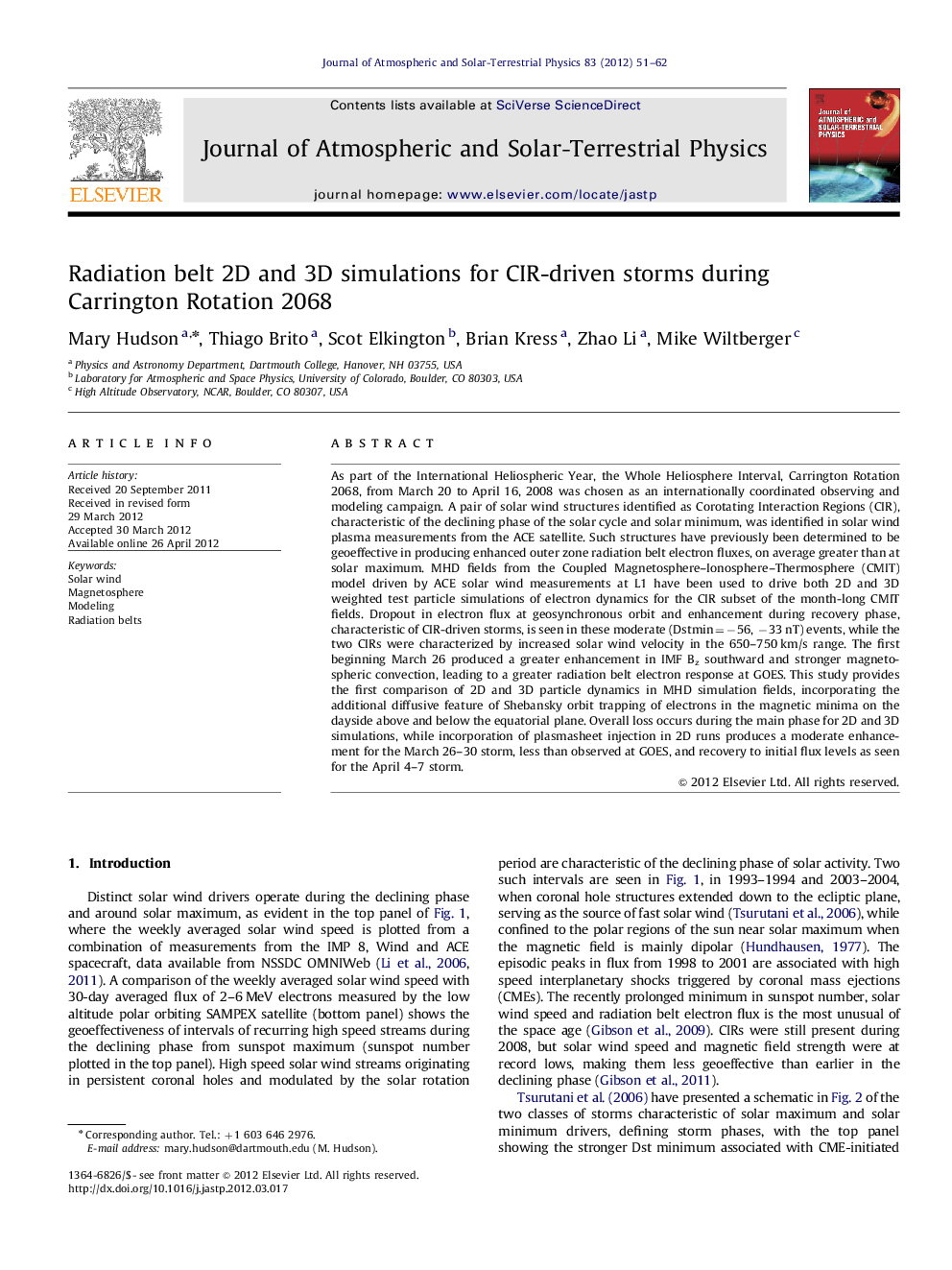| کد مقاله | کد نشریه | سال انتشار | مقاله انگلیسی | نسخه تمام متن |
|---|---|---|---|---|
| 1776919 | 1523649 | 2012 | 12 صفحه PDF | دانلود رایگان |

As part of the International Heliospheric Year, the Whole Heliosphere Interval, Carrington Rotation 2068, from March 20 to April 16, 2008 was chosen as an internationally coordinated observing and modeling campaign. A pair of solar wind structures identified as Corotating Interaction Regions (CIR), characteristic of the declining phase of the solar cycle and solar minimum, was identified in solar wind plasma measurements from the ACE satellite. Such structures have previously been determined to be geoeffective in producing enhanced outer zone radiation belt electron fluxes, on average greater than at solar maximum. MHD fields from the Coupled Magnetosphere–Ionosphere–Thermosphere (CMIT) model driven by ACE solar wind measurements at L1 have been used to drive both 2D and 3D weighted test particle simulations of electron dynamics for the CIR subset of the month-long CMIT fields. Dropout in electron flux at geosynchronous orbit and enhancement during recovery phase, characteristic of CIR-driven storms, is seen in these moderate (Dstmin=−56, −33 nT) events, while the two CIRs were characterized by increased solar wind velocity in the 650–750 km/s range. The first beginning March 26 produced a greater enhancement in IMF Bz southward and stronger magnetospheric convection, leading to a greater radiation belt electron response at GOES. This study provides the first comparison of 2D and 3D particle dynamics in MHD simulation fields, incorporating the additional diffusive feature of Shebansky orbit trapping of electrons in the magnetic minima on the dayside above and below the equatorial plane. Overall loss occurs during the main phase for 2D and 3D simulations, while incorporation of plasmasheet injection in 2D runs produces a moderate enhancement for the March 26–30 storm, less than observed at GOES, and recovery to initial flux levels as seen for the April 4–7 storm.
► Whole Helisosphere Interval radiation belt electron response to the two CIR/HSS driven storms.
► First combined plasmasheet injection and trapped electron source population modeled in 2D.
► First phase space density calculation in 3D and comparison with 2D.
► Examination of 3D effects, Shebansky orbit diffusion, not included in 2D.
► General trend of loss during main phase seen in both 2D and 3D, with recovery when plasmsheet injection is included in 2D.
Journal: Journal of Atmospheric and Solar-Terrestrial Physics - Volume 83, July 2012, Pages 51–62